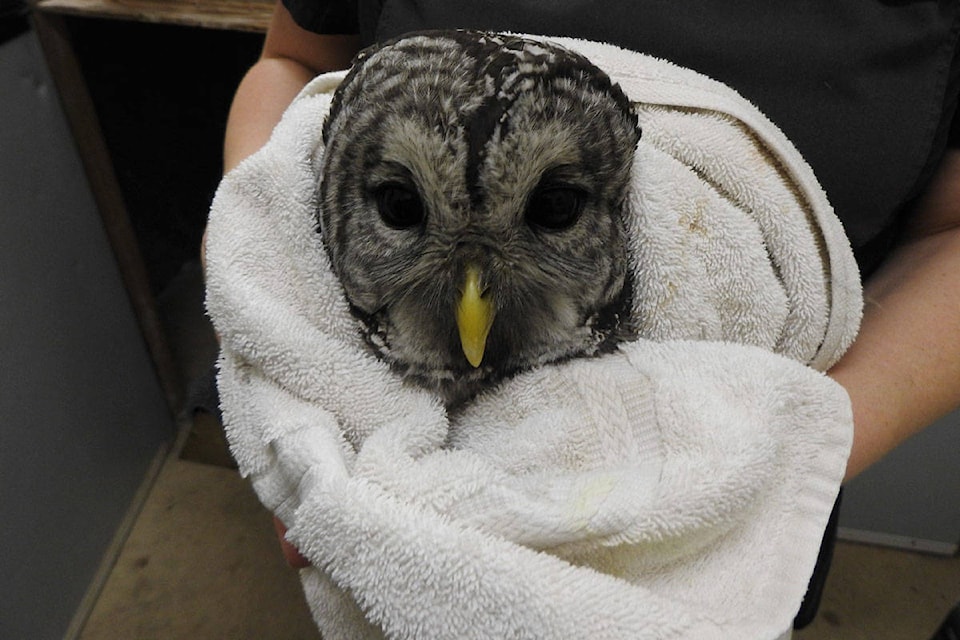The BC SPCA Wild Animal Rehabilitation Centre (Wild ARC) is cautioning motorists to drive carefully after seeing an influx of barred owls and other raptors admitted to the facility.
Wildlife assistant Ashley Currie said the rise in injured barred owls and raptors coming into the facility is common at this time of year.
“As it’s getting darker we’re starting to do our daily work commute at times that it starts to get dark which is prime hunting time for owls,” Currie said.
READ ALSO: Wild ARC rehabilitates 77 raccoons over the summer
Owls and raptors are also attracted to rodents, which are attracted to food that people throw from their car windows and onto the roadway or in ditches. Currie said an owl could attempt to hunt a rodent in a roadside ditch and still get hit by a vehicle.
Some injuries that barred owls have been admitted with include fractures, road rash, missing feathers and head trauma. Currie said that while many owls and raptors are being admitted to Wild ARC, it’s important to note that there are likely many that don’t even make it to the facility for treatment.
“We don’t have numbers for how many don’t make it to us,” Currie said.
Motorists are advised to not throw anything out of their vehicles and to be observant while driving, looking out for wildlife on the roads or in ditches.
READ ALSO: Wild ARC seeks frozen fish donations for wildlife
In the last year, Wild ARC has successfully reunited more than 100 baby animals with their wild moms including fledgling birds, deer fawns, raccoons, goslings, squirrels and rabbits during its busy season from May to September.
About 2,700 animals have made their way through the facility’s doors since January with hundreds having recovered and been returned to the wild.
Rehabilitators at Wild ARC treat nearly 140 different species each year.
shalu.mehta@goldstreamgazette.com
